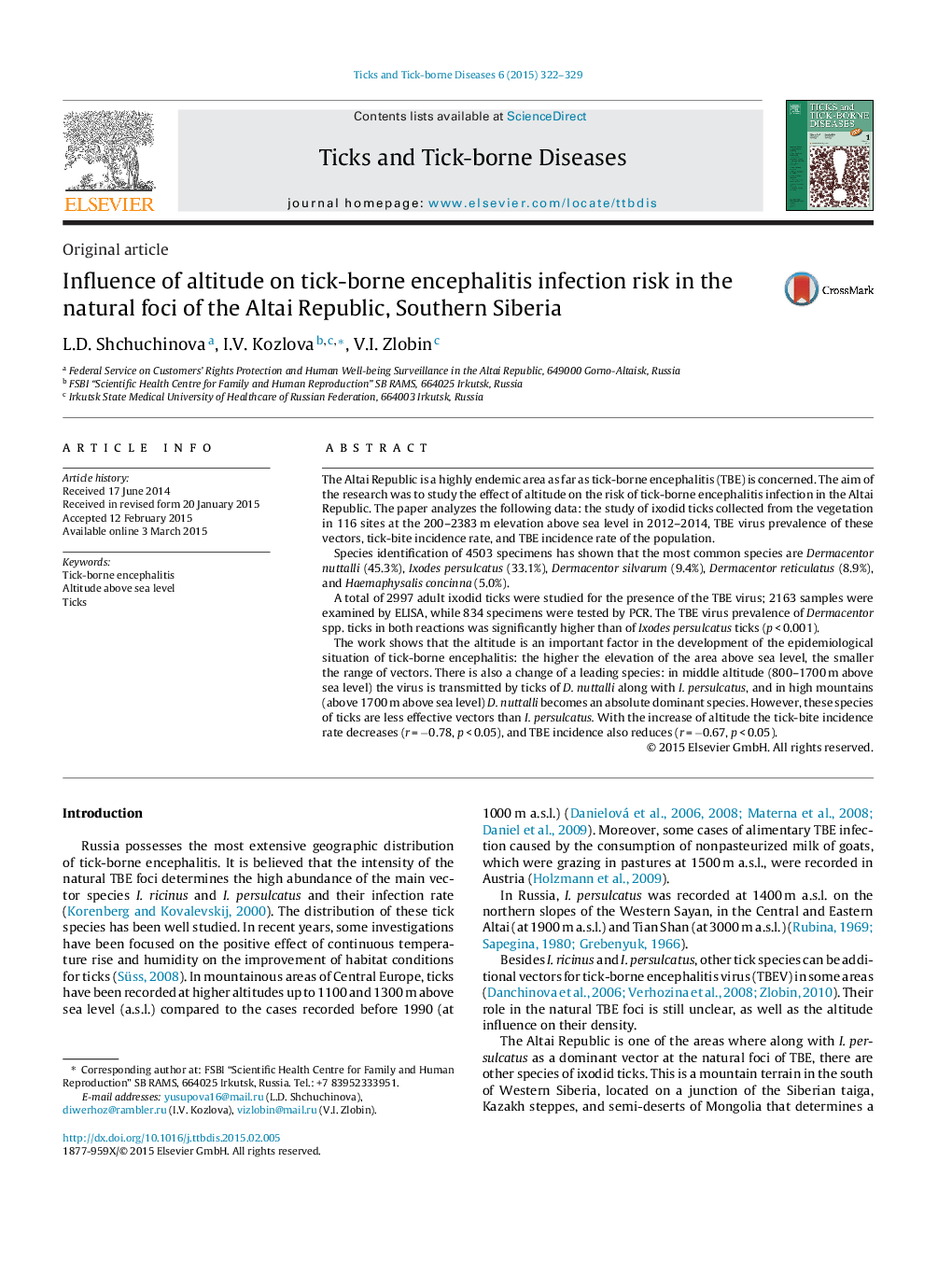| کد مقاله | کد نشریه | سال انتشار | مقاله انگلیسی | نسخه تمام متن |
|---|---|---|---|---|
| 2473930 | 1113104 | 2015 | 8 صفحه PDF | دانلود رایگان |
The Altai Republic is a highly endemic area as far as tick-borne encephalitis (TBE) is concerned. The aim of the research was to study the effect of altitude on the risk of tick-borne encephalitis infection in the Altai Republic. The paper analyzes the following data: the study of ixodid ticks collected from the vegetation in 116 sites at the 200–2383 m elevation above sea level in 2012–2014, TBE virus prevalence of these vectors, tick-bite incidence rate, and TBE incidence rate of the population.Species identification of 4503 specimens has shown that the most common species are Dermacentor nuttalli (45.3%), Ixodes persulcatus (33.1%), Dermacentor silvarum (9.4%), Dermacentor reticulatus (8.9%), and Haemaphysalis concinna (5.0%).A total of 2997 adult ixodid ticks were studied for the presence of the TBE virus; 2163 samples were examined by ELISA, while 834 specimens were tested by PCR. The TBE virus prevalence of Dermacentor spp. ticks in both reactions was significantly higher than of Ixodes persulcatus ticks (p < 0.001).The work shows that the altitude is an important factor in the development of the epidemiological situation of tick-borne encephalitis: the higher the elevation of the area above sea level, the smaller the range of vectors. There is also a change of a leading species: in middle altitude (800–1700 m above sea level) the virus is transmitted by ticks of D. nuttalli along with I. persulcatus, and in high mountains (above 1700 m above sea level) D. nuttalli becomes an absolute dominant species. However, these species of ticks are less effective vectors than I. persulcatus. With the increase of altitude the tick-bite incidence rate decreases (r = −0.78, p < 0.05), and TBE incidence also reduces (r = −0.67, p < 0.05).
Journal: Ticks and Tick-borne Diseases - Volume 6, Issue 3, April 2015, Pages 322–329
